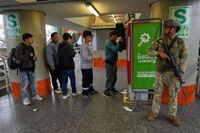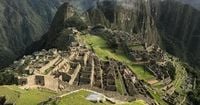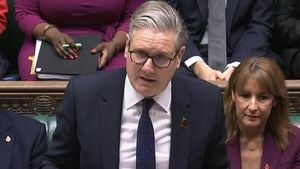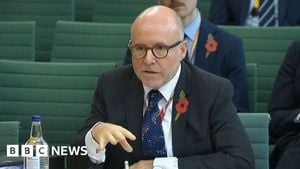Peru’s capital, Lima, and its neighboring port city Callao awoke this week to the unmistakable presence of soldiers and police patrolling the streets—a stark sign of a new 30-day state of emergency ordered by interim President José Jerí. The emergency decree, which came into effect at midnight on Tuesday, October 21, 2025, marks the latest—and perhaps most sweeping—attempt by Peruvian authorities to quell a surge in crime, extortion, and public unrest that has gripped the country in recent months.
The dramatic move follows weeks of anti-government protests that culminated in the impeachment of the previous president, Dina Boluarte, who was ousted on October 10 after lawmakers criticized her inability to stem a rising tide of criminal activity. According to the Associated Press, President Jerí wasted little time in asserting his authority, declaring the state of emergency just days after assuming office and one week after a massive protest demanding his resignation turned violent. That demonstration left one protester dead and another with a severe skull fracture, further fueling tensions in a nation already on edge.
The new decree applies specifically to Lima and Callao, with authorities citing these areas as hotspots for violence and extortion. Callao, as Peru’s principal port city, is a critical hub for commerce and logistics. According to reporting by SeaNewsEditor, the port has already seen significant disruptions, with road blockades hampering the movement of goods and the flow of daily life. Kuehne+Nagel, a major logistics firm, has advised clients to monitor the situation closely, as the impact on shipping and supply chains is expected to be considerable for the duration of the emergency.
But what does this state of emergency actually mean for Peruvians? The government now has sweeping powers to deploy the armed forces alongside police to maintain public order. As detailed by Democracy Now and echoed in the Canadian government’s updated travel advisory, authorities can restrict freedom of movement, monitor correspondence, conduct searches and seizures, and detain persons of interest. The decree also suspends several constitutional rights, including the freedom of assembly and protest—a move that has drawn sharp criticism from civil society groups and ordinary citizens alike.
In practical terms, the emergency measures go even further. According to the Associated Press, the decree bans everyday activities such as two adults riding together on a motorcycle—a common mode of transport in Lima—and limits visits to prisoners. It even allows authorities to cut power to prison cells, except for essential lighting, as part of efforts to disrupt criminal networks operating from behind bars.
For many residents, the sudden influx of soldiers and police is a jarring reminder of past crackdowns that have failed to deliver lasting security. "There have already been several states of emergency, the extortions continue, the murders do not stop," said Manuel Timoteo, a commuter in northern Lima, as quoted by the Associated Press. "The soldiers go out for a few days, stand with their rifles on a corner, leave and everything remains the same."
This skepticism is not unfounded. Previous states of emergency, including one declared by Boluarte’s government from March to May 2025, were widely criticized as ineffective. Despite these efforts, crime rates have continued to climb. Government data cited by the Associated Press paints a grim picture: homicides have soared from 676 cases in 2017 to 2,082 in 2024, while extortion complaints have exploded from 2,305 in 2020 to 21,746 last year. Most victims are working-class citizens, often targeted by criminal gangs that extort small businesses and threaten public transportation workers—sometimes brazenly, in front of passengers.
The recent wave of protests that led to Boluarte’s impeachment and Jerí’s rise to power were fueled in large part by public outrage over this unchecked violence. Over the past month alone, more than 200 people were injured in clashes with security forces, according to Democracy Now. Many Peruvians have taken to the streets demanding not only an end to crime, but also greater accountability and reform from their leaders.
The international community has taken notice. Following the emergency declaration, the Canadian government updated its travel advisory for Peru, warning travelers to exercise a high degree of caution due to high levels of crime, social conflicts, and the risk of strikes. The advisory urges Canadians in Peru to monitor local media, always carry valid identification, and follow the instructions of local authorities. It also recommends avoiding non-essential travel to several provinces where domestic terrorism, drug trafficking, kidnappings, extortion, and guerrilla activity pose significant threats. Areas within 20 kilometers of the borders with Colombia and Ecuador are considered especially dangerous, with risks ranging from armed incursions to landmines.
For those living and working in Lima and Callao, the state of emergency brings a daily reality of uncertainty and heightened surveillance. The right to protest—long a hallmark of Peruvian democracy—has been sharply curtailed, and even routine activities now carry new risks. The government’s justification is clear: to restore order and protect citizens from spiraling crime. As President Jerí stated when announcing the decree, the measures are aimed at curbing "extortion and murder" that have plagued these urban centers.
Yet, the effectiveness of such crackdowns remains an open question. Critics argue that without deeper reforms—addressing corruption, improving policing, and investing in social programs—the cycle of violence and emergency decrees will only continue. The skepticism voiced by residents like Timoteo is echoed by many experts, who warn that heavy-handed tactics may offer only temporary relief, while underlying problems fester.
Still, for businesses and logistics operators, the immediate concern is practical: how to navigate the disruptions caused by road blockades and increased security checks. The port of Callao, a lifeline for Peru’s economy, is especially vulnerable. Companies like Kuehne+Nagel are urging clients to stay informed and flexible, as the situation could change rapidly in the days and weeks ahead.
As Peru enters this latest period of emergency rule, the stakes could hardly be higher. With crime rates at historic highs, public trust in government at a low ebb, and the threat of further unrest looming, the coming month will test the resolve of both leaders and citizens. Whether the current measures will bring lasting peace or simply mark another chapter in a long-running struggle remains to be seen.
For now, the streets of Lima and Callao are quieter, but the uncertainty in the air is unmistakable. As soldiers stand guard and daily routines are upended, Peruvians are left to wonder: will this time be any different?





